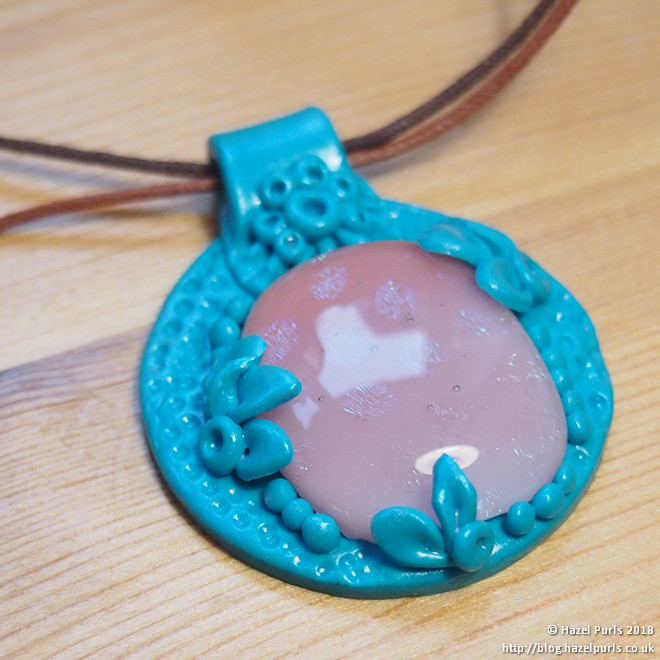The Fimo and glass pendant I made at the weekend is now varnished (to protect the mica) and strung onto cotton threads. (I tried to buy more at the weekend but the selection in Hobby Craft was extremely poor, so it’s strung onto brown cotton).

I’ve also been trying out some new techniques. This swirl pendant was a lot of fun to make.

I tried making faux mokume gane (faux because I’m not working with layers of metal). During my first attempt I got carried away and rolled my block too many times, meaning the colours were almost blended together. I decided to use the cutoff scraps from my first attempt and have another go. So my mokume gane is somewhat random, but still interesting. I added flowers from a cane I’d made.
This resulted in a patterned sheet that I used to make a few hollow doughnut beads.


During my creative researches, I discovered that polymer clay doesn’t play well with all plastics. Polymer clay (in its raw form) contains a plasticiser, so any plastics of the same type will react with the plasticiser ruining both the clay and the plastic item. Plastics that are safe with polymer clay are polyethylene terephthalate (PETE – #1 when recycling), polyethylene – either low density (LDPE – #4 when recycling) or high density (HDPE – #2), polypropylene (PP – #5). Acrylic is also safe. Plastics that are not safe include polyvinyl chloride (PVC – #3), vinyl, and polystyrene (#6) from which things like CD cases are made.
It’s always good to know what the real thing should look like – so here are some mokume gane rings in precious metals. Very beautiful. I think this is quite funny, really. Mokume gane is technique to make woodgrain patterns in metal and faux mokume gane is emulating the metal in polymer clay 🙂
Resources
Hollow Bead Tutorial
Swirly Lentil Bead Tutorial
Plastics and Polymer Clay
Plastics by Numbers
